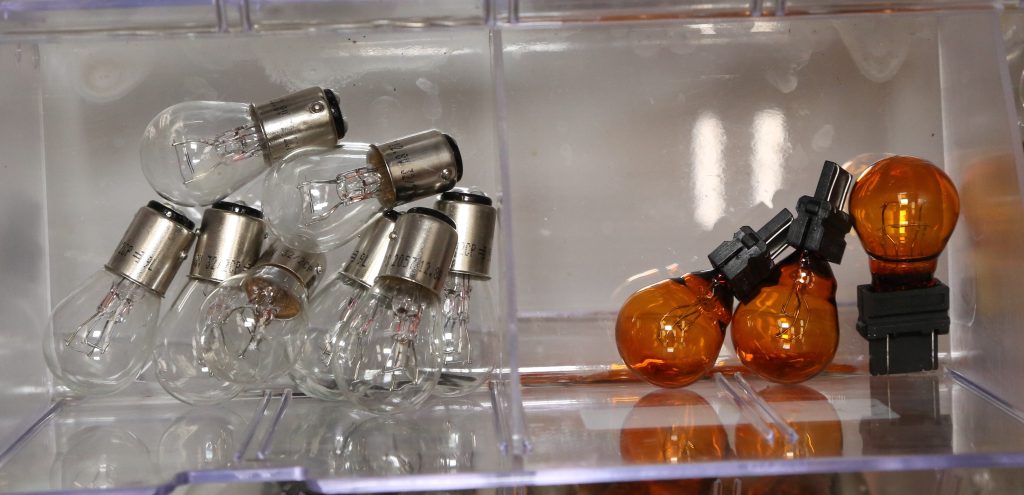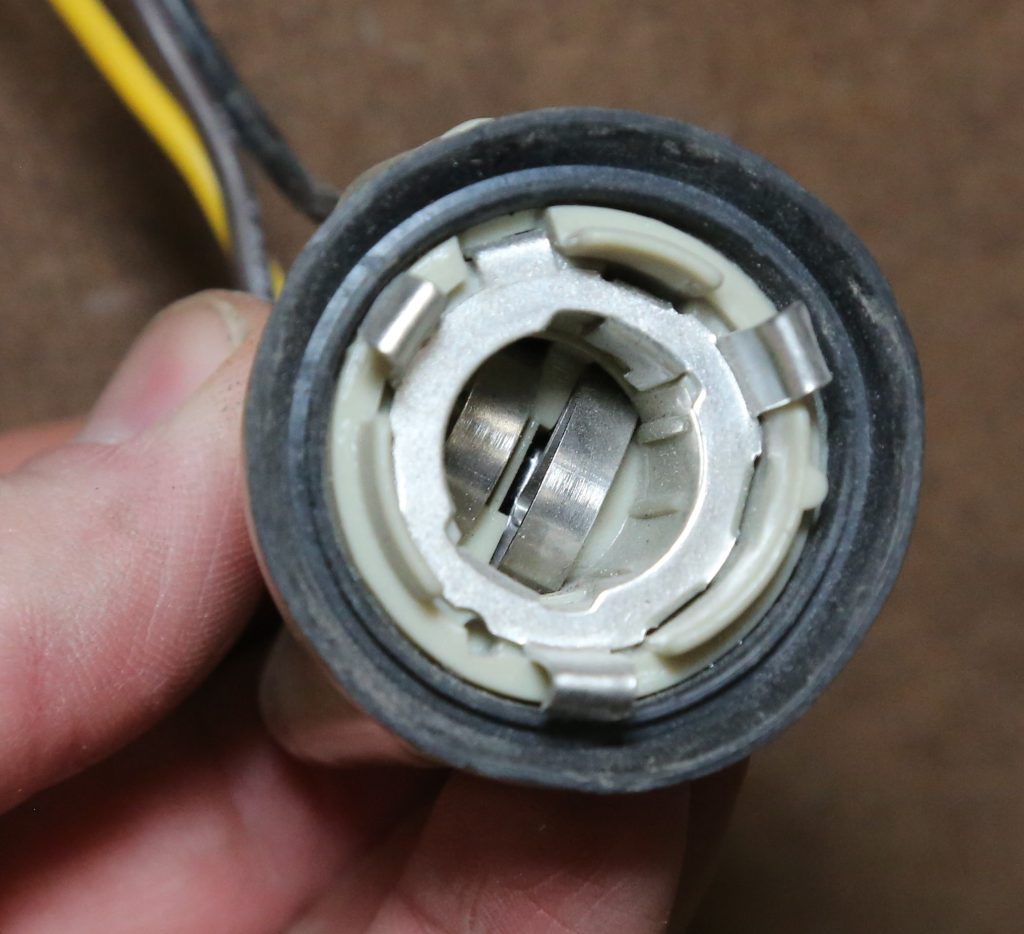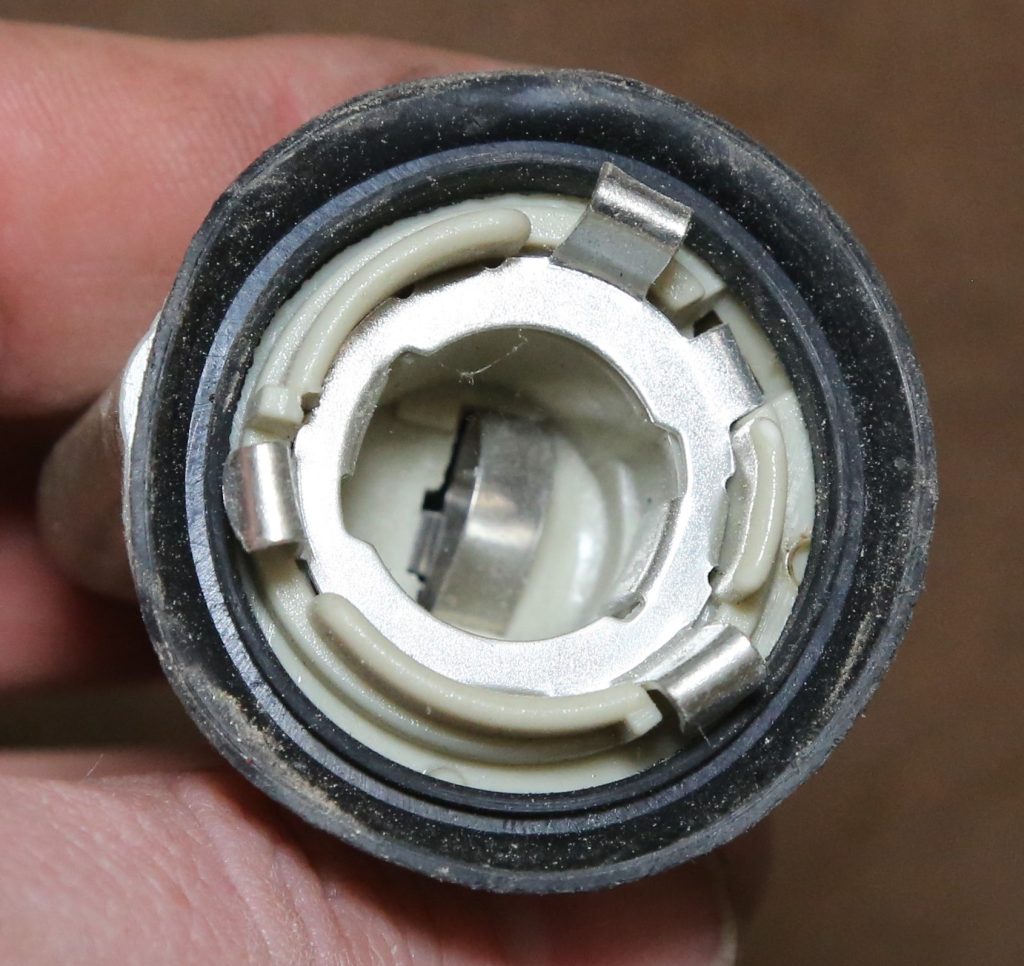When it comes to automotive light bulbs, most of us think about headlights and turn signals. But there are way more bulbs in the average car than you may even realize, and finding the right bulb can be a bit of a hassle at times.
Walk into any parts store and you will see a wall of bulbs for specific tasks and vehicles. Finding a replacement H4 (or 9003) is easy, but what if you are restoring the dash on your 1962 Falcon and need the little bulb that illuminates the speedometer so it is fully lit at night?
Let’s see if we can help you shed some…err…light on the subject (we’ll show ourselves out after this story).

Common Types of Car & Truck Headlights
You may also enjoy our Headlight Buyer’s Guide. It contains a handy dictionary of common automotive headlight terms and definitions.
Sealed beam headlights were required in the United States from 1940 until 1983, though some manufacturers used them into the 1990s. Sealed beam headlights combine a reflector, a lens, and a bulb in a sealed package. When one went bad, you removed the entire unit and screwed in a new one.
Sealed beam headlights originally had incandescent bulbs that gave off a yellowish light that was none too bright. Sealed beams with halogen bulbs came on the market in the late 1970s. Most modern replacement sealed beam headlights have halogen bulbs. They use halogen gas to keep the filament from overheating and put out a less yellowish light. An average halogen bulb has a brightness of around 700 lumens in low beam mode and round 1,200 lumens for high beams. There are headlight conversions available to replace sealed beams with lights that use replaceable halogen bulbs.

Composite headlights use a glass or plastic housing with a replaceable halogen bulb. The first American car that had factory composite headlights was the 1984 Lincoln Continental VII. They allowed manufacturers to create more aerodynamic, stylish headlights and experiment with different lens materials.

High Intensity Discharge (HID) headlights came on the scene in 1991 when BMW installed them on its 7-Series cars. They use replaceable bulbs that arc electricity between two tungsten electrodes surrounded by Xenon gas. HID bulbs emit a very bright white light that is close to daylight on the color spectrum. An average HID bulb is rated for around 3,000 lumens, though they can be as bright as 5,000 lumens.
HID bulbs also last much longer than halogen bulbs. HID headlights use ballasts to step up the vehicle’s 12 volt power to the higher voltages needed to create the electric arc.

LED headlights provide brighter and more focused light than halogen or even HID headlights. They are more energy-efficient and last longer. An average LED bulb falls into the 2,000 to 4,000 lumen range depending on upon the number of LEDs it has.
There is a catch with retrofitting LED bulbs though: If the factory did not install LED headlights in your vehicle or offer them as an option, you cannot legally replace your headlights with LEDs in the United States. It is legal to replace older bulbs in fog lamps, daytime running lights, taillights, and side markers with LED bulbs.
When replacing your headlights or headlight bulbs, you should always replace them in pairs. Headlight bulbs tend to put out less light as they age. If you only replace one bulb, the older one will give off less light, making you less visible than you would be with two new bulbs.

Headlight Bulbs by the Numbers
Headlight bulbs are designated by type and trade number—for example, an H4 type bulb has a 9006 trade number. Numbers are based on wattage, base type, and number of filaments (designating a low, high, or low/high beam). Since halogen bulbs are still the most popular, most replacements have an H prefix. In most cases you can find out which bulb you need for the car light in question in the owner’s manual. Just match the numbers when it comes time for replacement.
These are the common headlight bulbs used in the U.S.:

- HB1 9004
- HB2 9003 (commonly used in halogen conversion kits)
- HB3 9005 (halogen and LED)
- HB4 9006 (halogen, HID, and LED)
- HB4A 9006XS
- HB5 9007 (halogen, HID, and LED)
- H13 9008 (halogen, HID, and LED)

Taillight, Reverse & Turn Signal Bulbs
After headlights, these lights are the most important as they let drivers behind you know what you are doing. Taillight bulbs come in clear and amber, depending on the vehicle and function. The colors are universal—clear or amber for taillight bulbs; red for brake lights; amber for turn signals; and clear for reverse lights.

Taillight bulbs are either single filament or double filament for dual-purpose bulbs (usually taillight and turn signal). Dual-purpose bulbs have multiple contact points so they can light each filament independently. The turn signal and reverse bulbs are often the same type as the taillights. The most common are the 1157 and 1156 ‘push-and-twist’ bulbs that have been used since the 1940s. In the late 1980s, some vehicles started using bulbs that simply push into a plastic clip that contacts the electrodes on the bulb. Common types for these are 912, 3157, and 7443.

Pretty much every car made before the 1990s uses incandescent bulbs. They are the least expensive but have a short lifespan. When your classic car’s bulb housings get a little corrosion, the bulbs will burn out really quickly.
There are halogen and LED conversion bulbs for taillights. Halogen bulbs are more energy-efficient and last longer than incandescents, but are only marginally brighter. LED bulbs are a street-legal replacements that put out 80-100 lumens per watt, so you get maximum light for less wattage. LEDs are expensive but not bank-breaking. The Holley Retrobrite LED 1157 and 1156 replacement bulbs cost $25 and work for most applications.

Automotive Interior Lighting
Interior bulbs come in a bunch different styles and names. Some are push-and-twist, some are push-in. Many dome lights use bulbs that look like fuses and have contacts on either end. Dash, dome, and courtesy lights are typically incandescent in most vehicles. LED lighting is becoming more popular in modern cars because it is brighter, more energy-efficient, and has a longer lifespan than incandescent or halogen dash lighting.

Converting to LED bulbs is easy for most interior lights. Dash lights may not be as simple. If you have a 1980s or older vehicle, it is usually just a matter of pulling the gauge cluster and replacing the bulbs. Dash bulbs in vehicles from the mid-1980s and later can be more difficult to access. Some dashes don’t have bulbs at all—they have lighting elements that are hard-mounted to the circuit boards.
It pays to research your vehicle before you tear the dash apart.

Your vehicle’s lighting is critical for safety and function. Make sure your vehicle’s lighting is in top working order with new bulbs, and consider making the switch to LEDs. They will reduce the amperage demand on your vehicle’s alternator and increase your ability to see and be seen on the road.

Comments